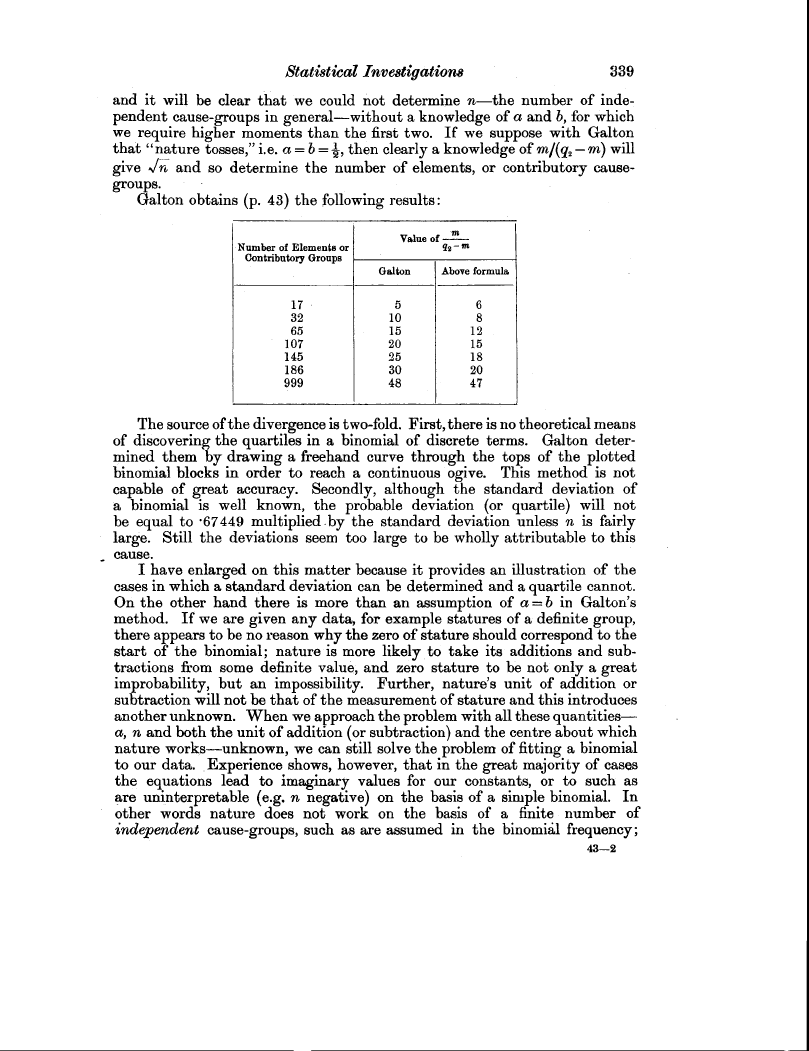Statistical Investigations 339
and it will be clear that we could not determine n-the number of independent cause-groups in general-without a knowledge of a and b, for which we require higher moments than the first two. If we suppose with Galton that "nature tosses," i.e. a = b = Q, then clearly a knowledge of m/(q, - m) will
give /n and so determine the number of elements, or contributory causegroups.
Galton obtains (p. 43) the following results:
|
Number of Elements or
Contributory Groups |
Value of M
42-M |
|
Galton |
Above formula |
|
17 |
5 |
6 |
|
32 |
10 |
8 |
|
65 |
15 |
12 |
|
107 |
20 |
15 |
|
145 |
25 |
18 |
|
186 |
30 |
20 |
|
999 |
48 |
47 |
The source of the divergence is two-fold. First, there is no theoretical means of discovering the quartiles in a binomial of discrete terms. Galton determined them by drawing a freehand curve through the tops of the plotted binomial blocks in order to reach a continuous ogive. This method is not capable of great accuracy. Secondly, although the standard deviation of a binomial is well known, the probable deviation (or quartile) will not be equal to -67449 multiplied. by the standard deviation unless n is fairly large. Still the deviations seem too large to be wholly attributable to this cause.
I have enlarged on this matter because it provides an illustration of the cases in which a standard deviation can be determined and a quartile cannot. On the other hand there is more than an assumption of a = b in Galton's method. If we are given any data, for example statures of a definite group, there appears to be no reason why the zero of stature should correspond to the start of the binomial; nature is more likely to take its additions and subtractions from some definite value, and zero stature to be not only a great improbability, but an impossibility. Further, nature's unit of addition or subtraction will not be that of the measurement of stature and this introduces another unknown. When we approach the problem with all these quantitiesa, n and both the unit of addition (or subtraction) and the centre about which nature works-unknown, we can still solve the problem of fitting a binomial to our data.. Experience shows, however, that in the great majority of cases the equations lead to imaginary values for our constants, or to such as are uninterpretable (e.g. n negative) on the basis of a simple binomial. In other words nature does not work on the basis of a finite number of independent cause-groups, such as are assumed in the binomial frequency;
43-2

